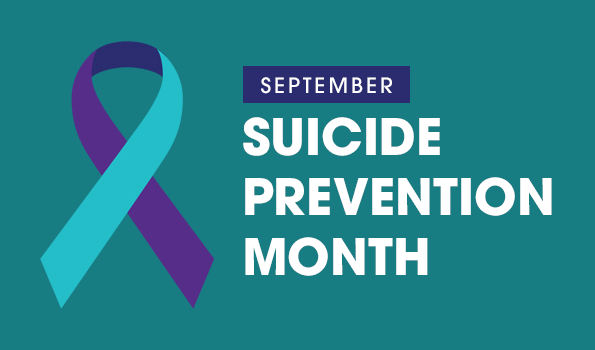Free U.S. National Suicide Prevention Lifeline at 800-273-8255, text TALK to 741741 or go to SpeakingOfSuicide.com/resources for additional resources.
Free TrevorLifeline for LGBTQ+ Crisis Intervention and Suicide Prevention. Available 24/7/365 via online chat at https://www.thetrevorproject.org/get-help-now/, texting 678-678, or by calling 1-866-488-7386.
September is dedicated to suicide prevention and remembering those who have been impacted by suicide. Suicide is a leading cause of death for Americans, and it is the second leading cause of death for the age group of 10-34. It has a far-reaching impact. According to the CDC, “suicide and suicide attempts affect the health and well-being of friends, loved ones, co-workers, and the community. When people die by suicide, their surviving family and friends may experience shock, anger, guilt, symptoms of depression or anxiety, and may even experience thoughts of suicide themselves.” Suicide is a growing mental health concern, but it can be prevented. Everyone has a role to play to save lives and create healthy and strong individuals, families, and communities. Listed below are the CDC’s recommended policies, practices, and programs for suicide prevention.
- 1. Strengthening economic supports. This includes strengthening household financial security and advocating for policies that encourage stable housing for all.
- 2. Strengthening access and delivery of suicide care. Both including mental health treatment options in insurance policies and addressing provider shortages in underserved areas can strengthen resource availability.
- 3. Create protective environments. This means reducing access to lethal means for those at risk of suicide and advocating for both community and organization-based policies.
- 4. Promote connectedness. This can include peer norm programs and community engagement activities, such as mental health fairs and walks.
- 5. Teach coping and problem-solving skills. Whether it’s social-emotional learning programs or more specified parent, family, and friend relationship programs.
- 6. Identify and support people at risk. Support looks like crisis intervention, treatment for those at risk, and treatment to prevent re-attempts.
- 7. Lessen harm and prevent future risks, such as through postvention (an intervention conducted after a suicide, largely taking the form of support for the bereaved) and safe reporting of suicide.
We hope that this list gave you some ideas for how you can advocate for suicide prevention this month and all year round. While we do not offer crisis intervention services like a suicide hotline, the Center for Behavioral Health is still a great tool for managing your mental health and psychological needs. We are available at behavioralhealth@spalding.edu or via phone at (502)792-7011.
https://www.cdc.gov/suicide/facts/index.html

You must be logged in to post a comment.